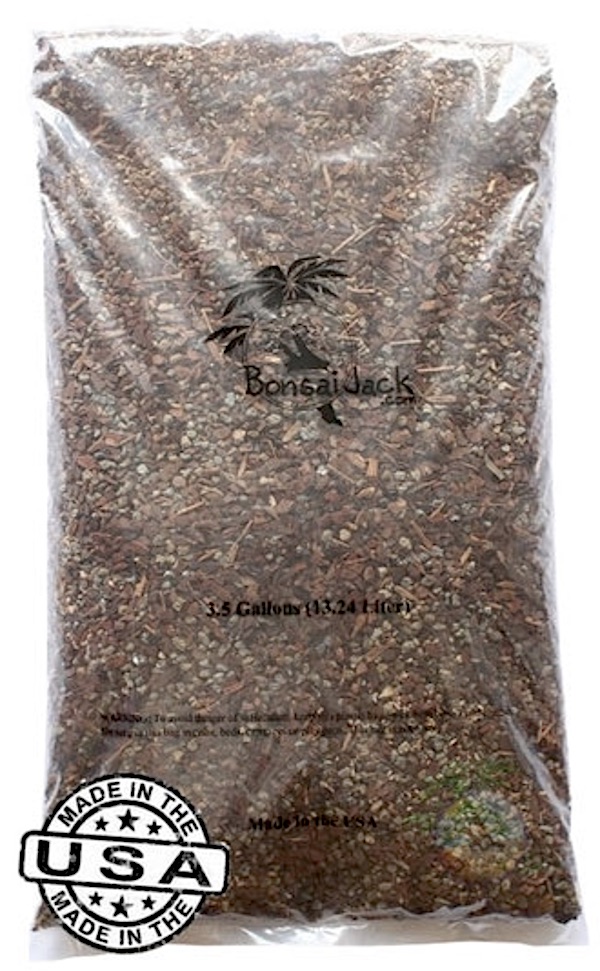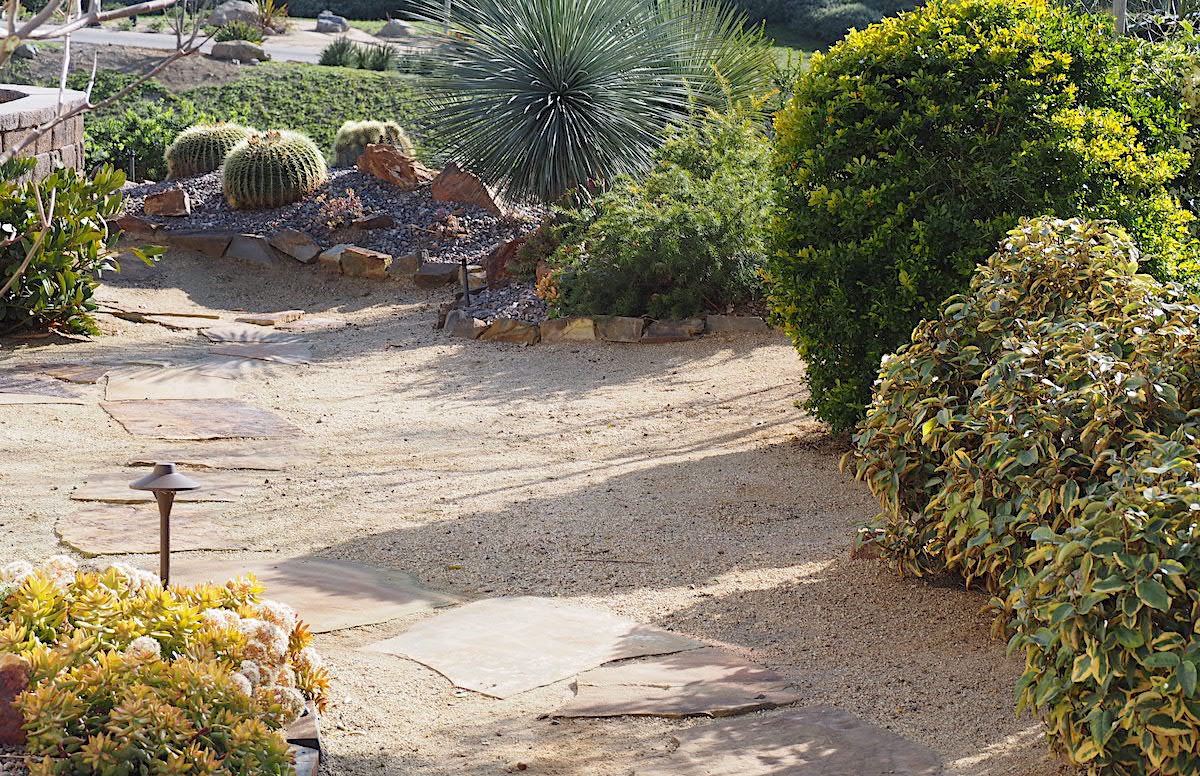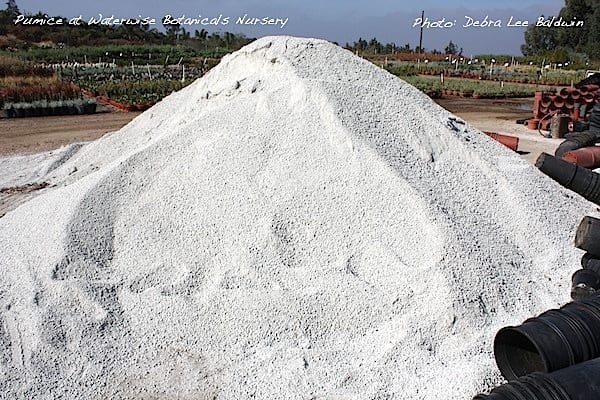Debra's Simple Soil Formula for Succulents
Please don't stress over soil. I've seen succulents thriving in pots filled with garden soil so hard a ball would bounce on it, and at a nursery in soil so rich in peat that moss grew along the edges.
Every grower, nurseryman and collector has a preferred mix. See a list on page 218 of Succulent Container Gardens, "Potting Mixes: What the Experts Use."
Here's mine. Modify it based on your climate and growing conditions:
For most succulents
Two parts inorganic grit to one part organic (i.e. plant-based) material, like compost or coir. OR SIMPLY MIX half-and-half bagged potting soil (from any nursery or garden center) and pumice (see below).
For fat succulents
...like cactus, euphorbias and pachyphytums: One part bagged soil to two parts pumice.
For thin-leaved succulents
...like dainty sedums and others that don't store much moisture: Two parts bagged soil to one part pumice.
What about bagged "cactus mix?"
Cactus mix that's high in pumice or perlite needs no amending. Read the label. If there's a high percentage of peat moss, you might as well buy regular potting mix (it's cheaper).
Are some mixes better than others?
Yes. Bonsai Jack makes what's arguably the best gritty mix for cacti and succulents. (Jack started as a bonsai supplier.) Available online from Mountain Crest Gardens.
Jack's Gritty Mix (shown here) is what the cool kids use.
UC Davis Mix
Ernesto Sandoval, long-time manager of the botanical conservatory at UC Davis near Sacramento, is a renowned succulent propagation expert. Here's his preferred mix (used with permission):
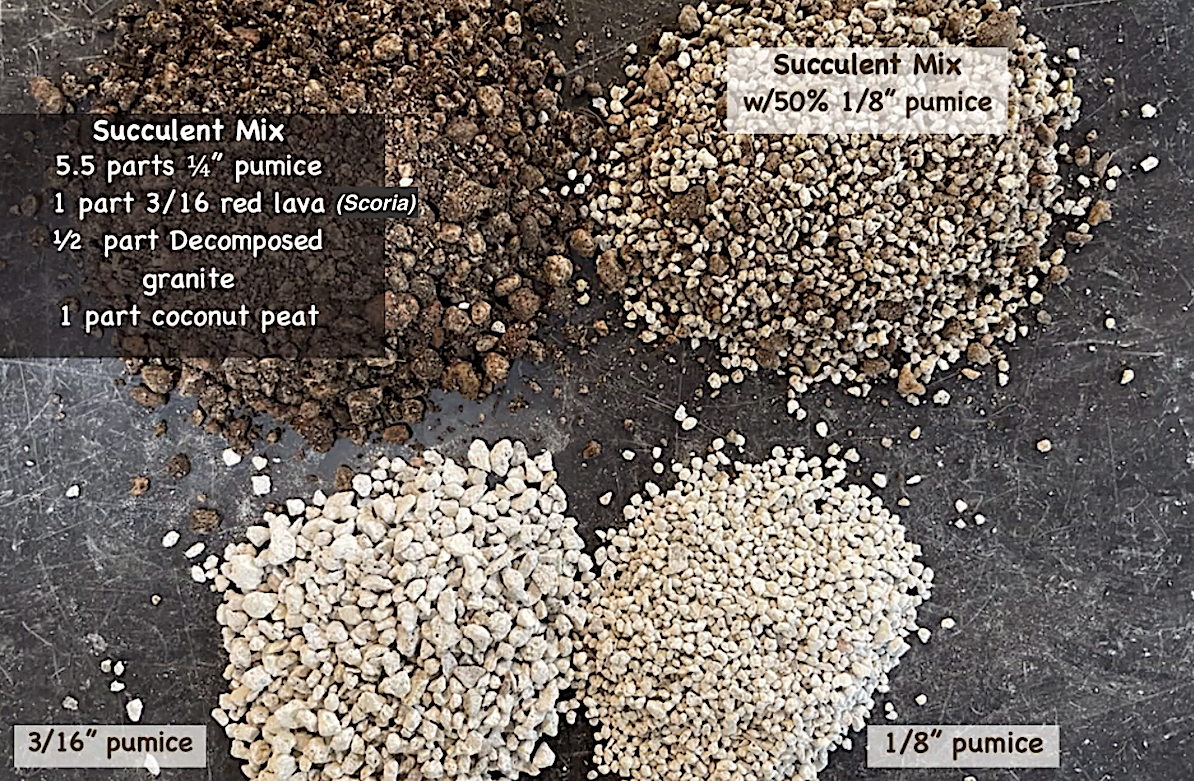
Ernesto Sandoval's soil mix
Benefits of Decomposed Granite (DG)
- Makes a good-looking topdressing suggestive of the plants' native habitats.
- Like all topdressings, DG helps hold moisture in the soil and moderates its temperature.
- Its relatively coarse texture makes it easy to weed. Fine roots pull out easily.
- Doesn't decompose, so it looks much the same for years.
- Drains rapidly. It's inorganic crushed rock, so water passes through it.
- As a soil amendment, it doesn't compact (like clay or fine sand do), thereby aiding aeration.
Does the amendment need to be pumice?
No. Pumice is best (I explain why below), but many other options work: perlite, decomposed granite, rice-sized bits of gravel and even chicken grit. Aim for about two parts inorganic coarse-grained sand or fine crushed rock to one part organic (i.e. plant-based) material (like compost).
Isn't perlite easier to get?
Yes, and some growers swear by perlite to lighten soils and enhance aeration. For years it was the industry standard. It’s the white bits in bagged potting mixes. Perlite's OK, but it does float to the surface of pots, and may make tidal drifts of white after watering.
Do NOT use
-- Kitty litter. It's clay.
-- "Stall Dry." It's not the same as "Dry Stall," which is pure pumice. I seems odd that "Stall Dry," a newer company, chose a similar name---thereby suggesting it's the same product. It's not. It's like kitty litter. However, both do absorb excess moisture in horse stalls. "Stall Dry" is common at tack-and-feed stores; "Dry Stall" is hard to find (call first).
No other soil amendment is as widely used by succulent growers and collectors as pumice (crushed lava rock). Here’s why.
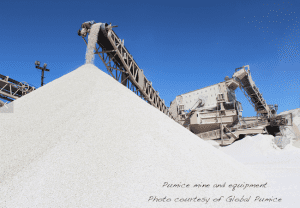 Pumice enhances drainage in garden beds.
Pumice enhances drainage in garden beds.- It keeps soils from getting mucky, so roots don’t rot in wet weather.
- It’s a natural, unprocessed organic product that comes from mines.
- It holds onto moisture. Although pumice may appear bone dry, compared to composted pine bark---a major component of bagged potting soils---it retains moisture up to 48 hours (in cool weather). Bark holds moisture about half as long.
- It releases moisture slowly, and at a steady rate.
- Tiny pores on the surface act as microscopic reservoirs to store moisture and nutrients.
- It helps to aerate the soil. (Plant roots need oxygen.)
- Depending on the mine it comes from, pumice may enrich soil with 70 or more beneficial trace minerals.
- It doesn’t decompose, rot, form drifts or blow away.
What size?
Pumice comes in grains that range from 1/8 to 3/8 inches. I use a mix of all sizes, but it doesn't really matter. When in doubt (and if you have the option) go with finer grains for succulents in containers and larger grains for garden beds.
How to Use Pumice in Your Garden
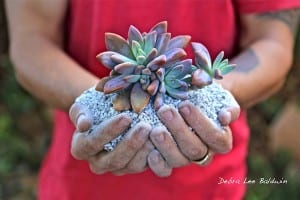
For succulents and other plants that can’t sit in wet soil, improve drainage by amending beds with a mix of 25% garden soil, 25% pumice, 25% compost and 25% sharp (large-grain) sand such as decomposed granite.
Plant cactus and cactus-like plants that store moisture and that are exceptionally prone to rotting (such as fat euphorbias) in berms amended 50% with pumice. If amending the soil in a garden bed isn't an option, fill the planting hole with pumice so roots are surrounded by it, and so the crown of the plant doesn't touch soil.
Use pumice as a topdressing to absorb rainwater that puddles around plants. For succulents and other plants endangered by soft, soggy soil, use a metal bar or broom handle to circle the plant with vertical tunnels (air holes) several feet deep. Space them 12-18 inches apart and about that far from the base of the plant. (The goal is to add pumice to the soil but not to damage roots.) Widen the openings at soil level a bit to make it easier to funnel pumice into them.
Other uses for pumice
Top-dress pots with it before adding crushed glass or florist’s marbles, so that the glass colors stay “true.” For example, I top-dressed my faux lily pond with pumice before adding crushed, tumbled blue-green glass and flat marbles.
Cover spilled oil, grease, coolant, hydraulic fluid and other toxic liquids with a layer of pumice. After it absorbs the fluid, sweep it up and dispose of it in an environmentally sensible way.
Resources
Where to get pumice
1. Your local feed store
Ask the closest if they carry “Dry Stall.” Dry Stall is pumice in 40-lb bags. Confusion alert: Do NOT substitute a product sneakily called "Stall Dry."
2. Garden centers and nurseries
Not all carry "horticultural pumice," and those that do sell small bags at a premium. However, if you're near San Diego, Waterwise Botanicals sells 50-lb. bags (1.5 cubic yards) for about $20.
3. Online (By Mail)
Contact sales manager Boyd Reese: Boyd@beaverpumice.com.
Videos
Soil for Succulent Pots and Gardens: How to Select the Best (3:13) - A large succulent nursery's time-tested soil formulas ensure best performance in pots and garden beds.
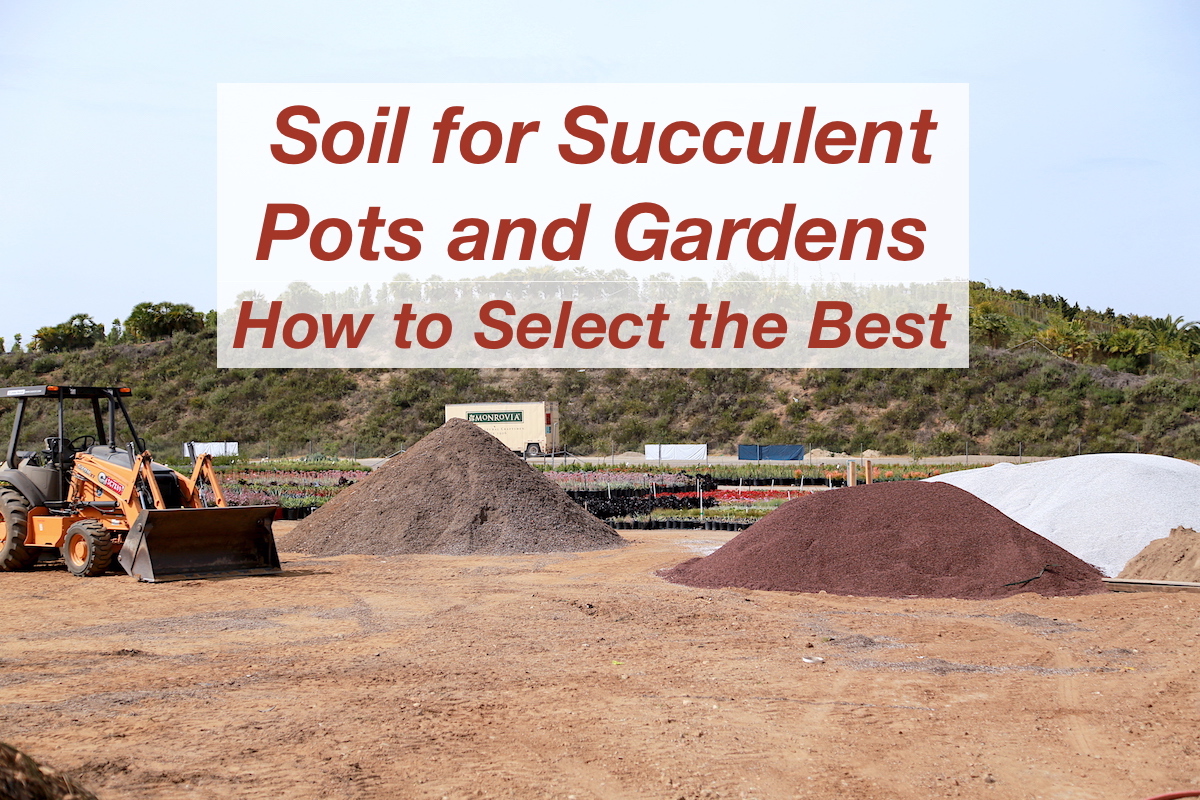
My newer of two YouTube soil videos features expert Tom Jesch of Waterwise Botanicals nursery
Soil Mix for Succulents (2:50) In this earlier video, I refer to "Dry Stall," a product that's basically pumice. NOTE: This is NOT the same as "Stall Dry." If your local feed store no longer carries Dry Stall, obtain "horticultural pumice" from sources here.

